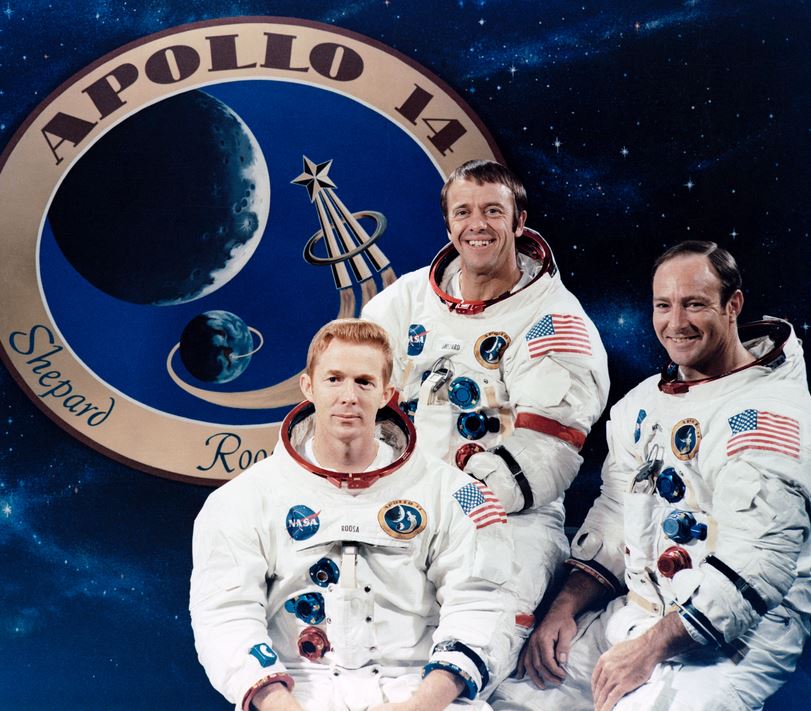
On this day in 1971, Apollo 14 landed on the Moon on the eighth manned mission of the United States Apollo program. The mission included two of the iconic moonwalks from the programme, always reminiscent of the momentous moment when the first man took the first steps.
It is rare in the world of technology that we can look back in time at a pinnacle of human achievement and innovation, but the moon landings still mark the boundary in physical human exploration.

Another list of greats came to the fore during this mission, principally Commander Alan Shepherd, as well as Stuart Roosa, and Lunar Module Pilot Edgar Mitchell. The entire mission lasted 9 days, 1 minute and 58 seconds, with 33 and a half hours spent on the Moon, and 9 and a half hours of extravehicular activity.
Landing area
The spot chosen for the landing was in the Fra Mauro Formation situated close to the Cone Crater. You might be thinking this does not sound like the most open and navigable landing site, and you would be correct.
Having achieved great success with landing accuracy on previous missions like Apollo 12, the planners behind the subsequent missions were confident in taking on more complex geological challenges. The destination also suited the central objective of the eighth mission, the sampling of material.
 Terms and description are one thing, but they shrink into insignificance when compared to the words of the precious few who cast their eyes upon the lunar surroundings.
Terms and description are one thing, but they shrink into insignificance when compared to the words of the precious few who cast their eyes upon the lunar surroundings.
Edgar D. Mitchell, Lunar Module Pilot, said: “. . . there’s a few boulders out my window. They’re scattered around falling between here and Doublet. I see at about my 2:30 position, probably 50 yards out, a large boulder that’s probably 3 feet across. There — that’s the largest one I have in field of view, or at least, in my near field of view. And there are two or three others perhaps half that size — or appear to be half that size in the same vicinity, just a little, little beyond, about 2:30 on the clock code and perhaps 50 meters to the largest one and then another 10 to 15 to the other big boulders.”
The task at hand
Collecting lunar samples was the crew’s main objective, with the team covering 3.5 kilometres and harvesting samples from 13 different locations. This was not the only task they completed, the trio also conducted 10 experiments, made examinations and took photographs of the Moon’s surface.
All of this Shepherd, Roosa and Mitchell carried out in the mere nine hours they had on the surface itself. They first emerged from their craft 5 hours and 23 minutes after landing, at which point the team was considered 40 minutes late due to communications system configuration problems.

The technology used to complete the mission included a mounted colour television camera for live coverage of the astronauts reaching the lunar surface. Not only was there a delay in making it out of the craft for the first moonwalk, they were also half an hour late to make it back onto the vessel after the second moonwalk of the mission.
Ransomware is ‘not a lightning strike’
IBM ships IoT to Rotterdam and NVIDIA GPU to the cloud
GCHQ stops 54m cyberattacks with ‘Great British Firewall’
Other tasks involved included the deployment of an S-Band Antenna, the setting up of a Solar Wind Composition Experiment device, and of course, the proud planting of the stars and stripes.
When will we return?
Well, it could be sooner than you think. U.S. Vice President Mike Pence said in October 2017 that the Trump administration would look to direct NASA in a return mission to the Moon. Further than this, there are also plans in place to do more than just land, with the VP commenting on gaining a more permanent foothold.
A mission of this kind would turn attention away from projects regarding the exploration of Mars, so far conducted using robots equipped with technology to feed valuable information back to planet Earth. These projects have been NASA’s prime focus since 2010.

Plans with Mars in mind have not only been remote robotic operations, the space agency has also been developing a new rocket and spacecraft geared towards taking astronauts to Mars and beyond. The names of the vessels are Space Launch System and Orion.






